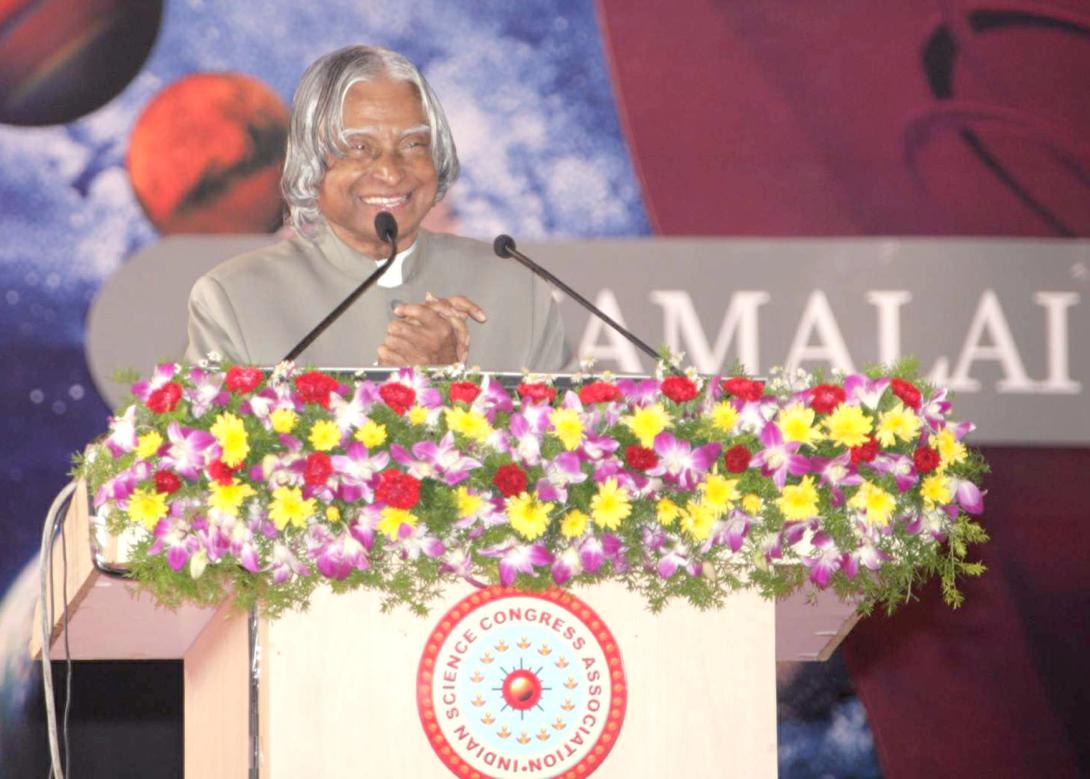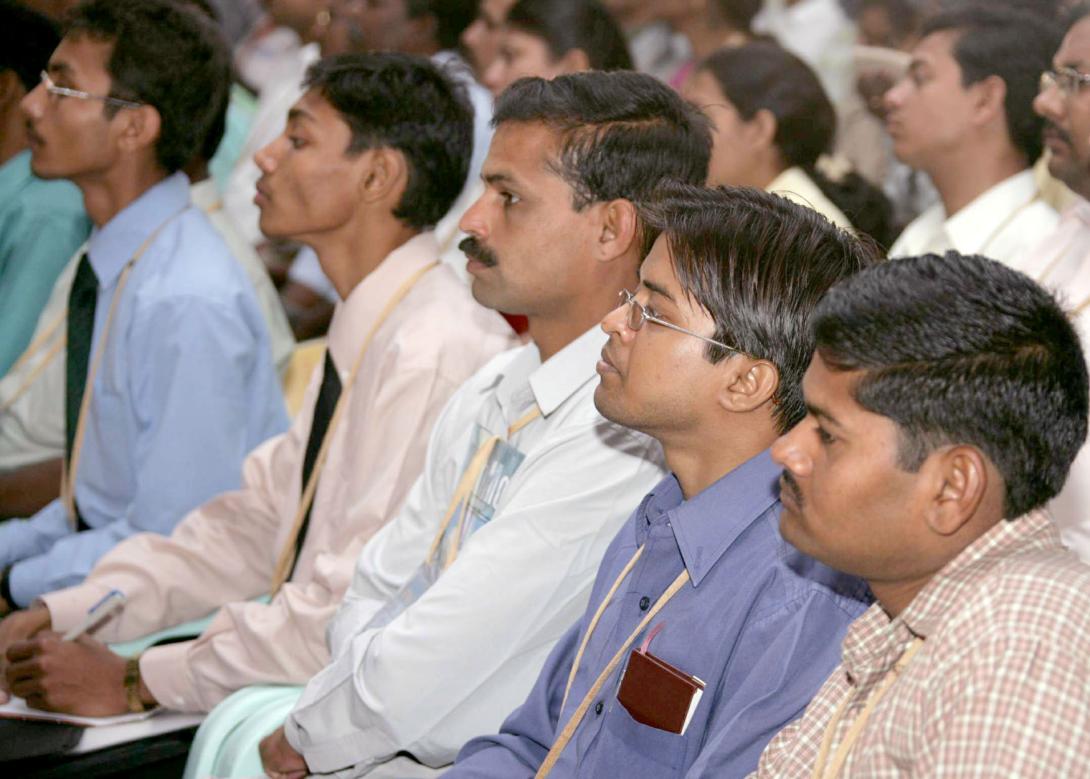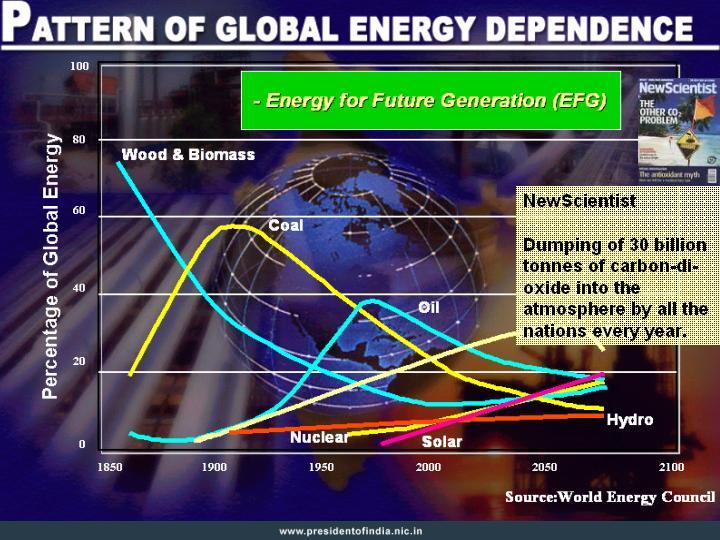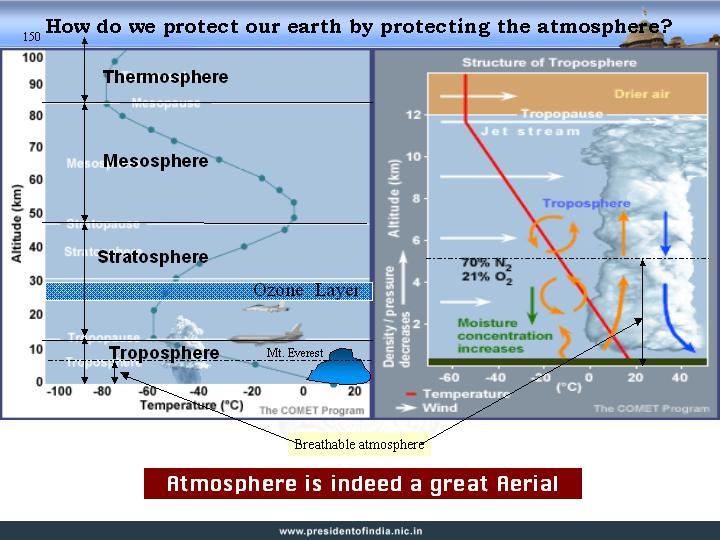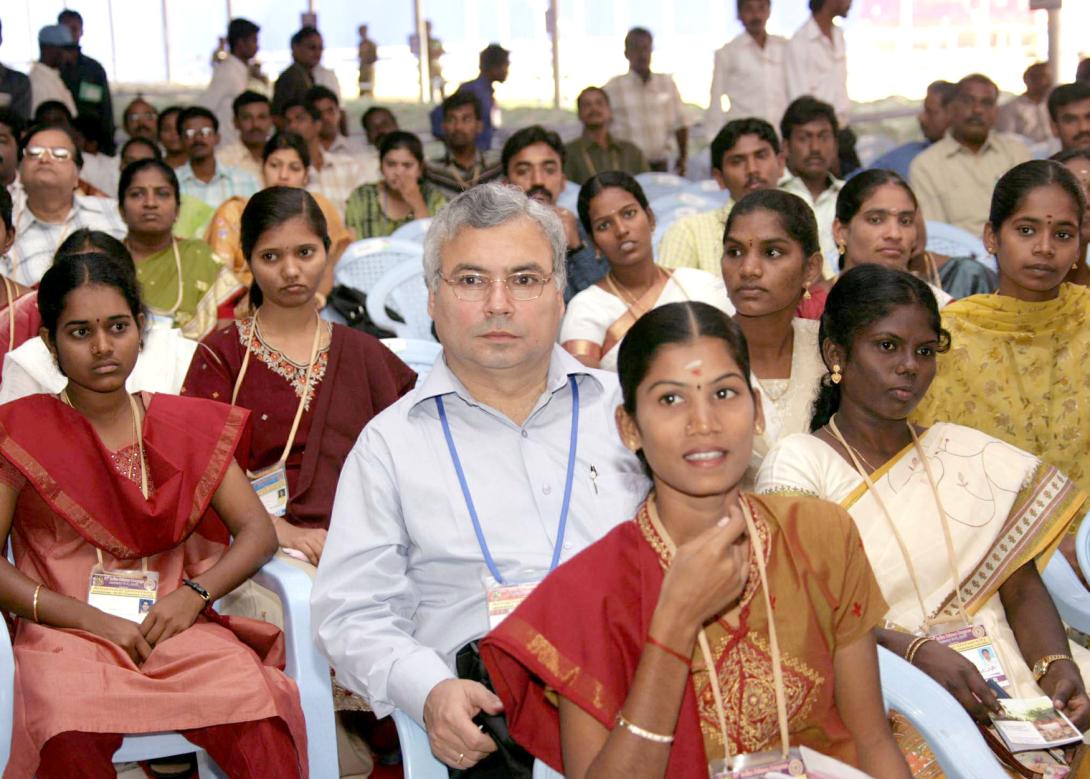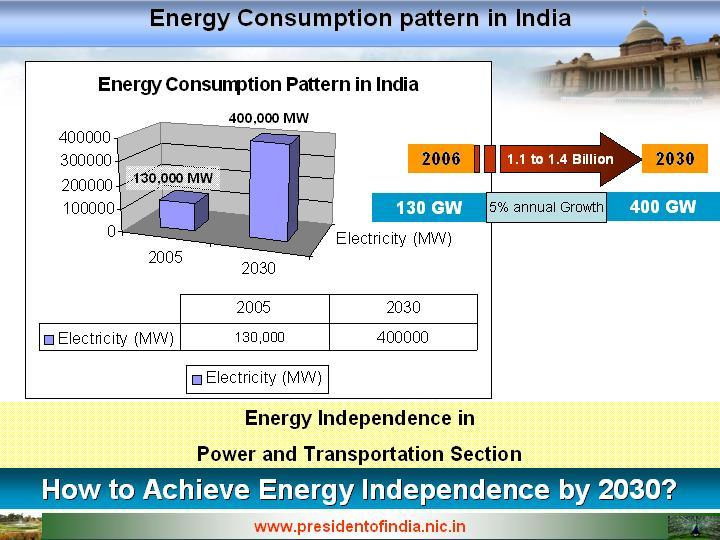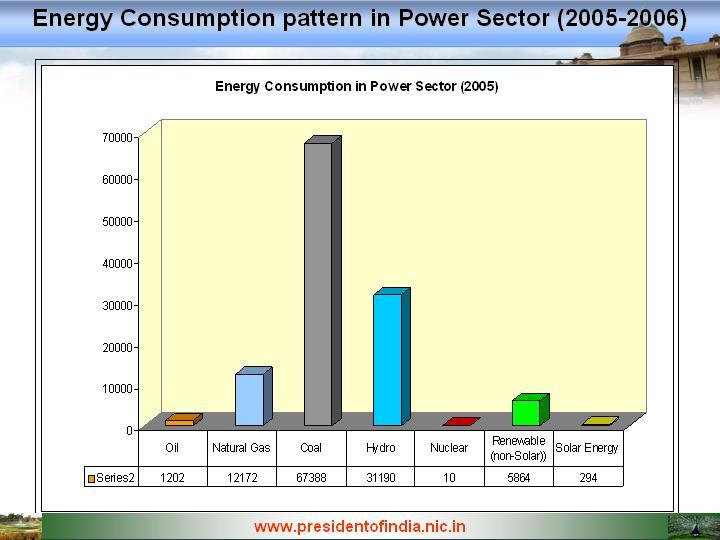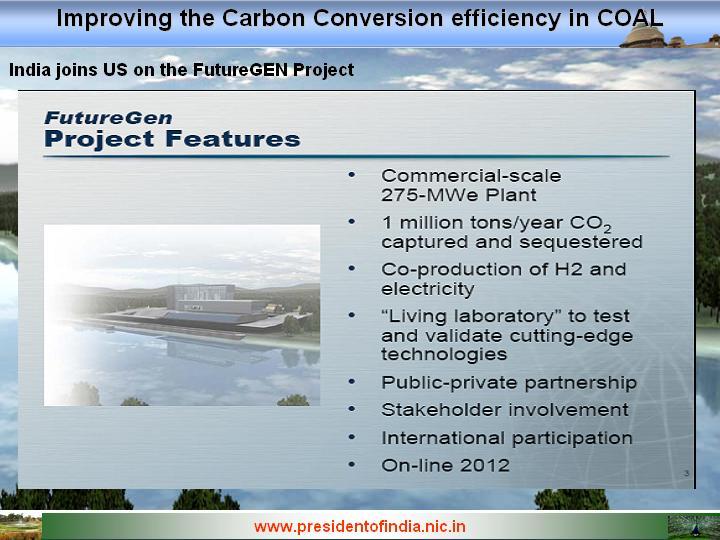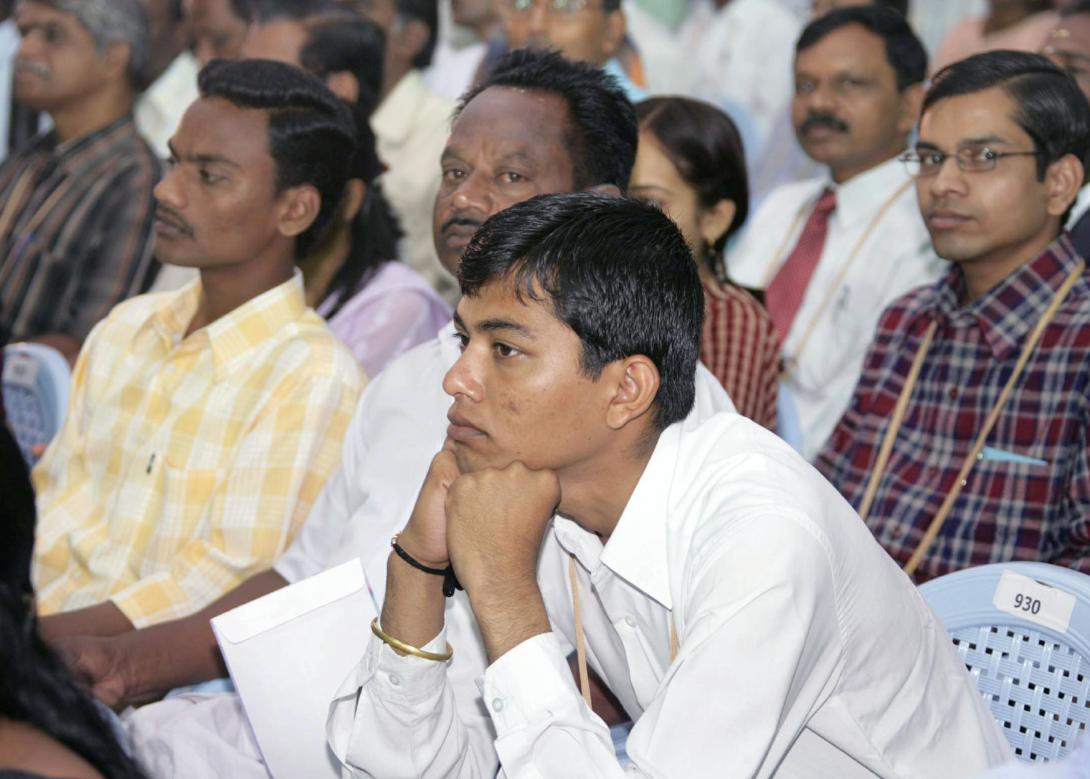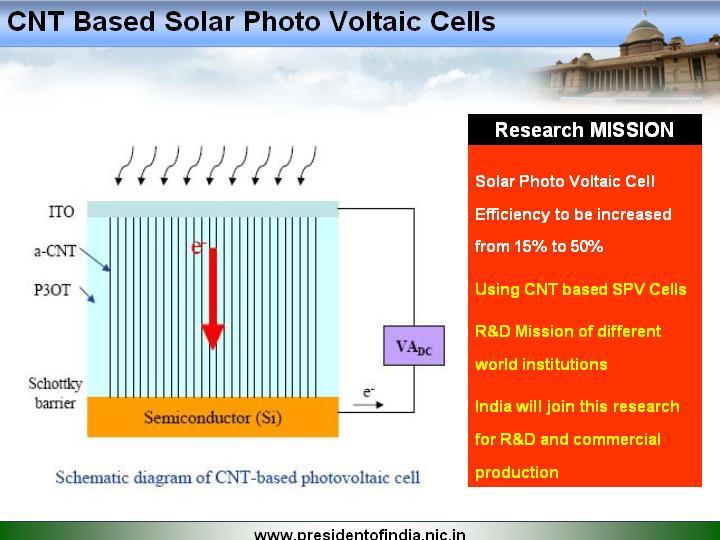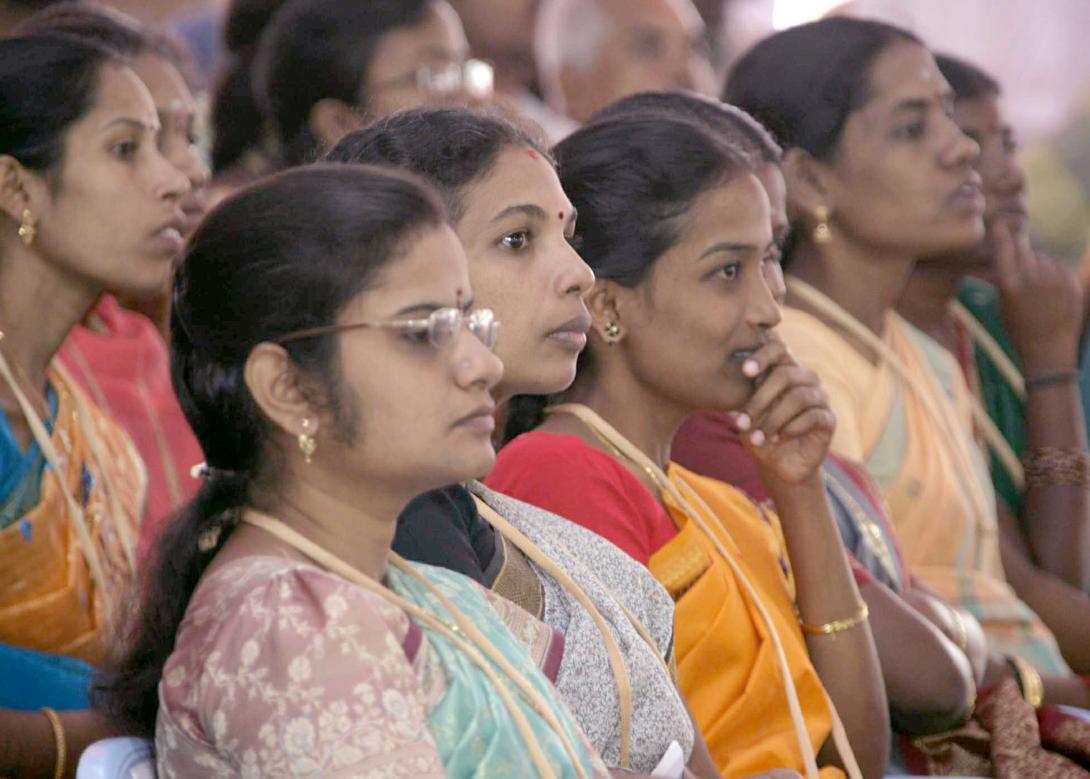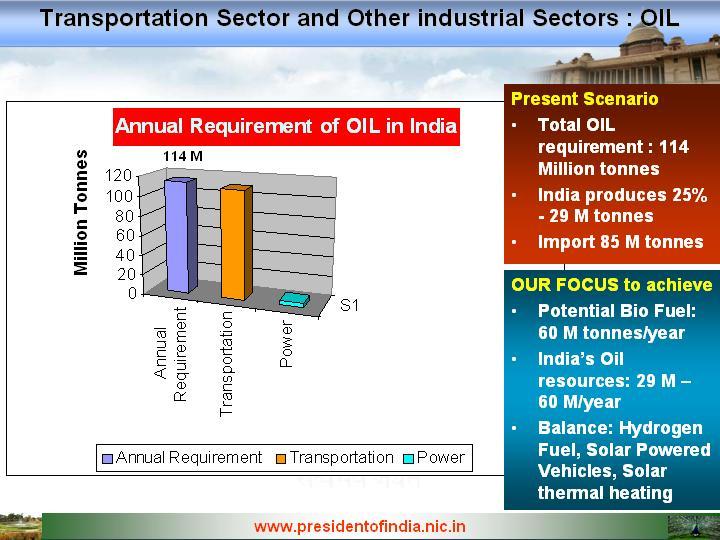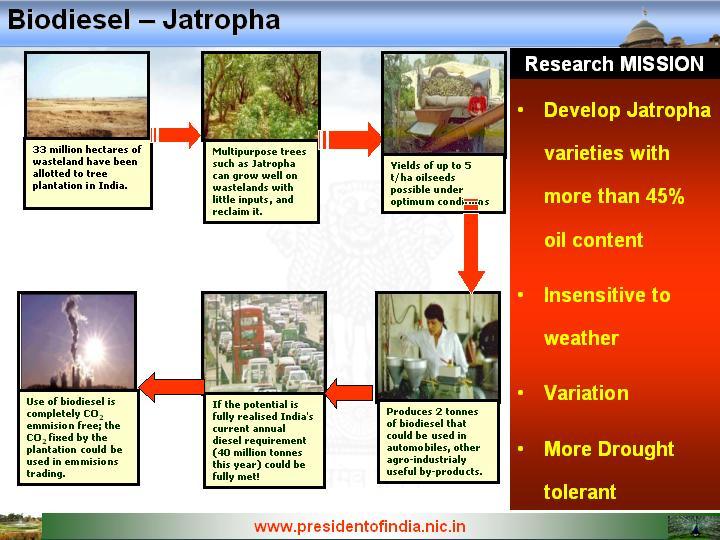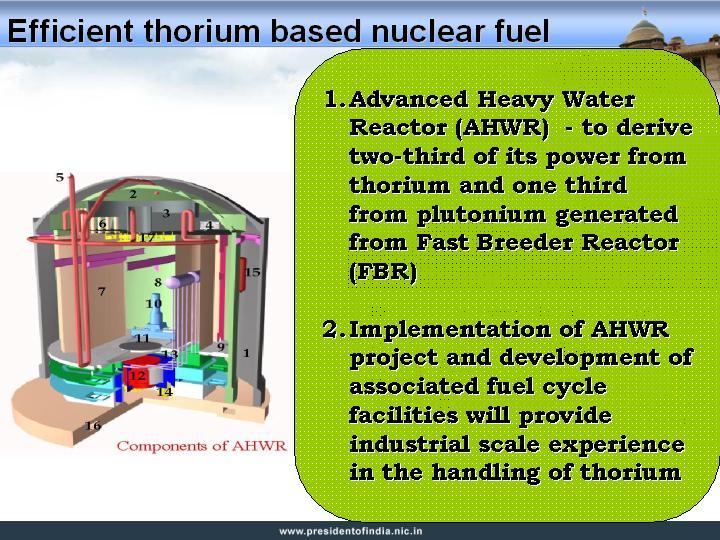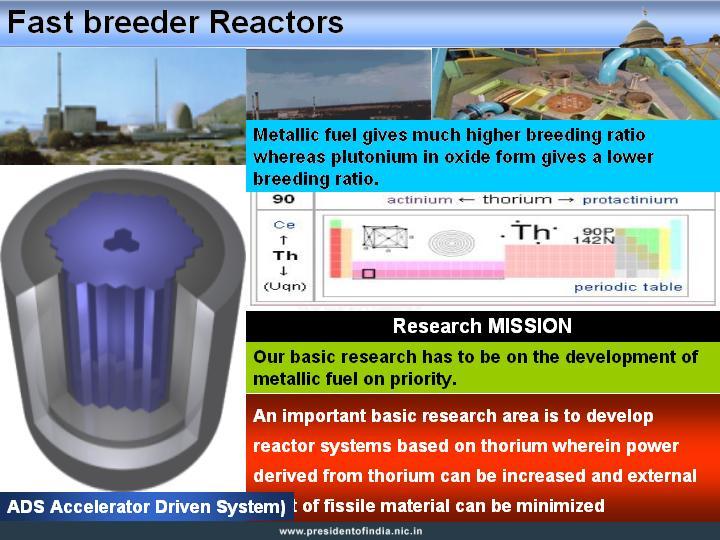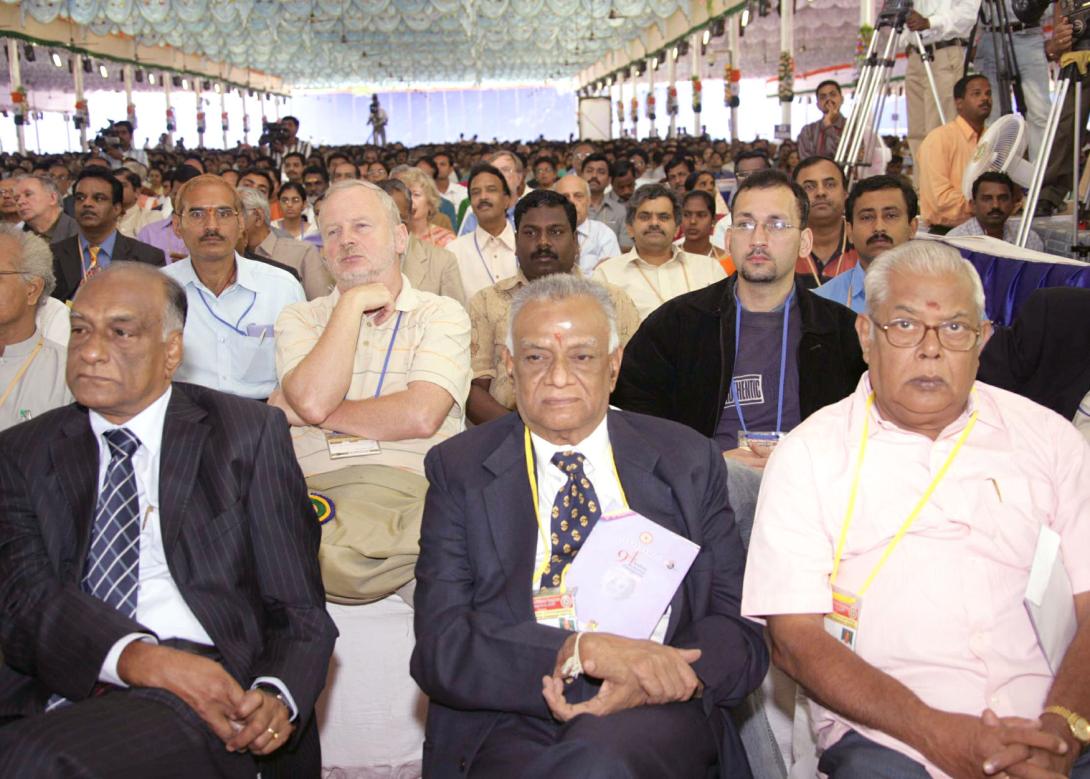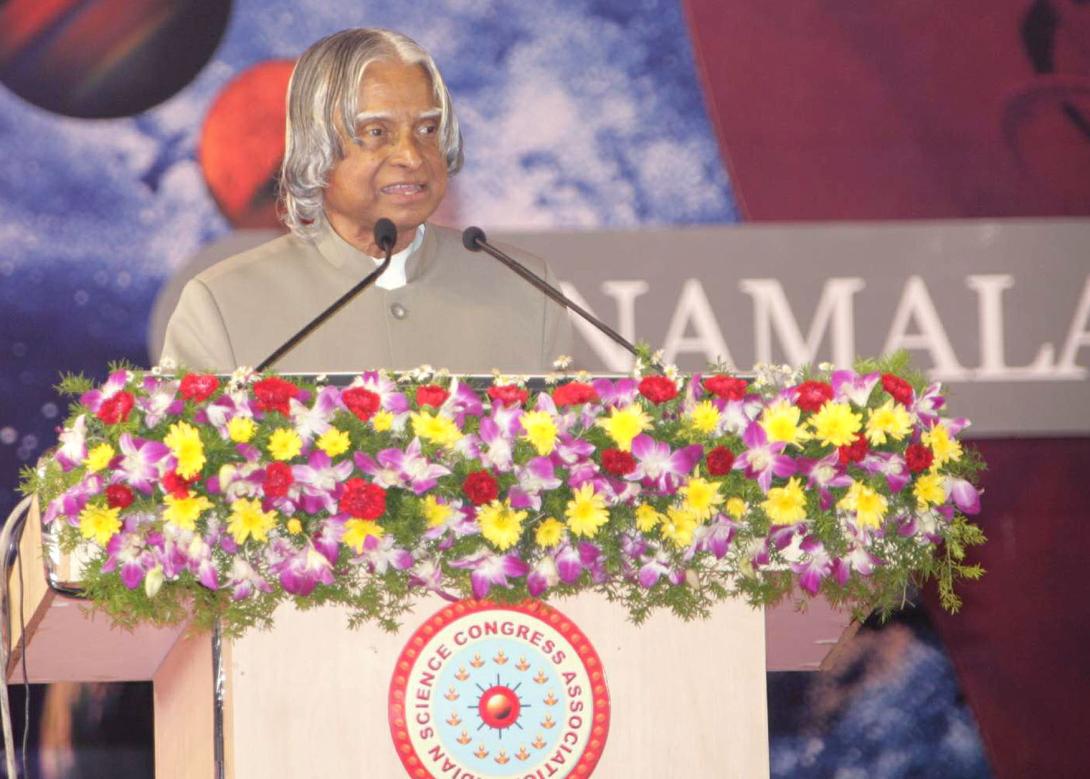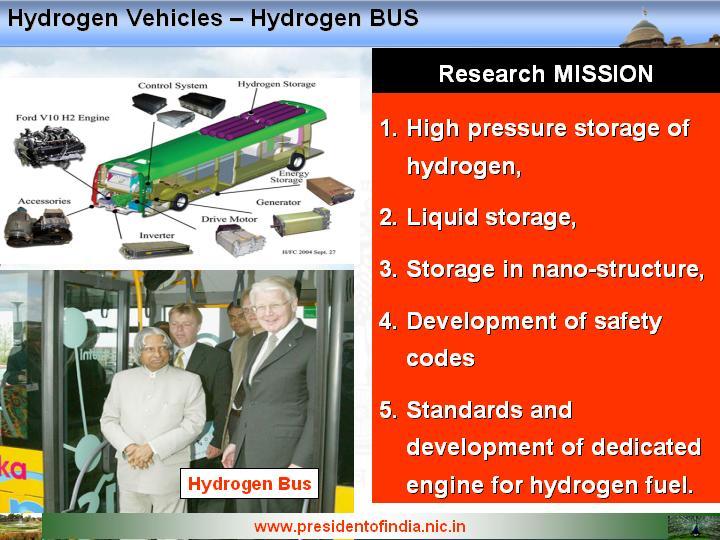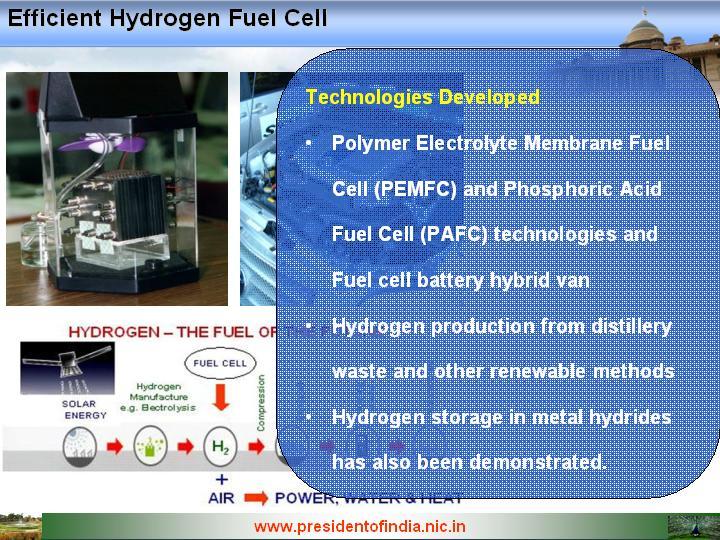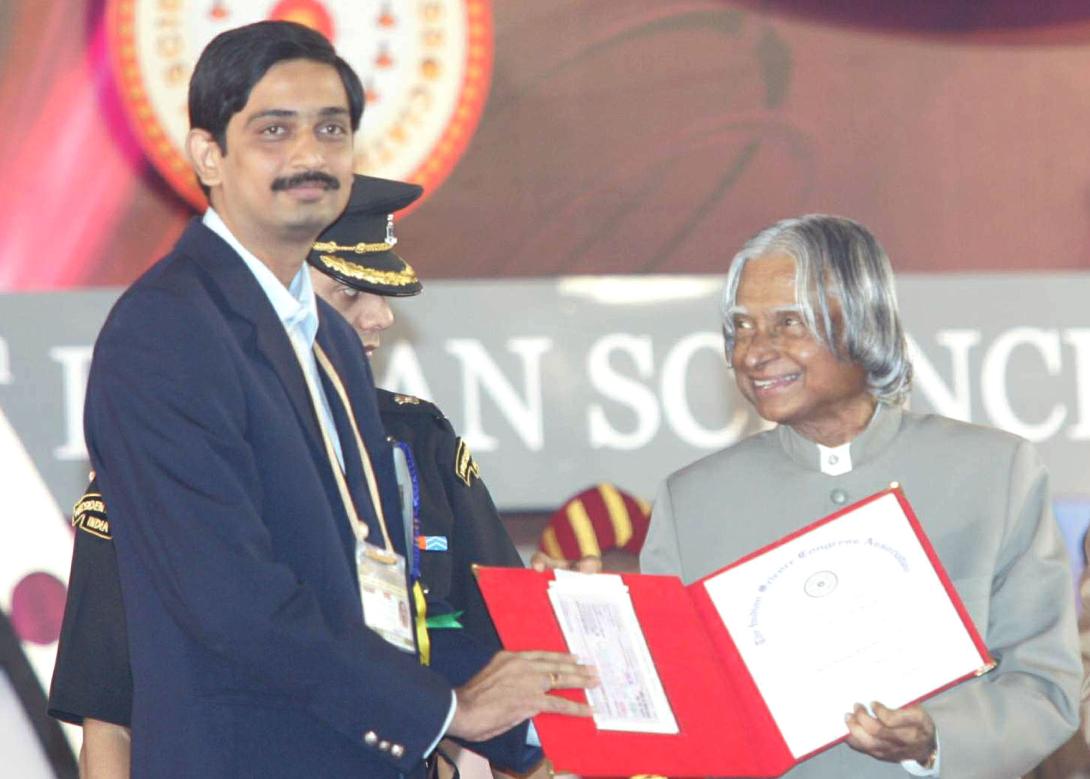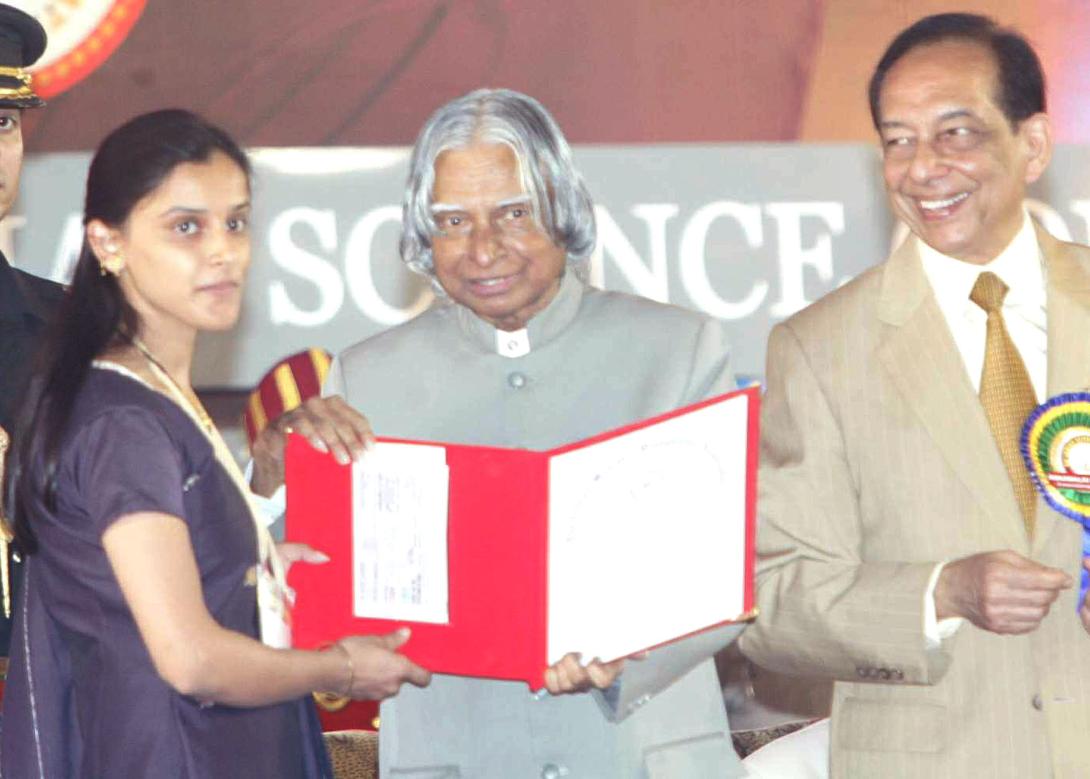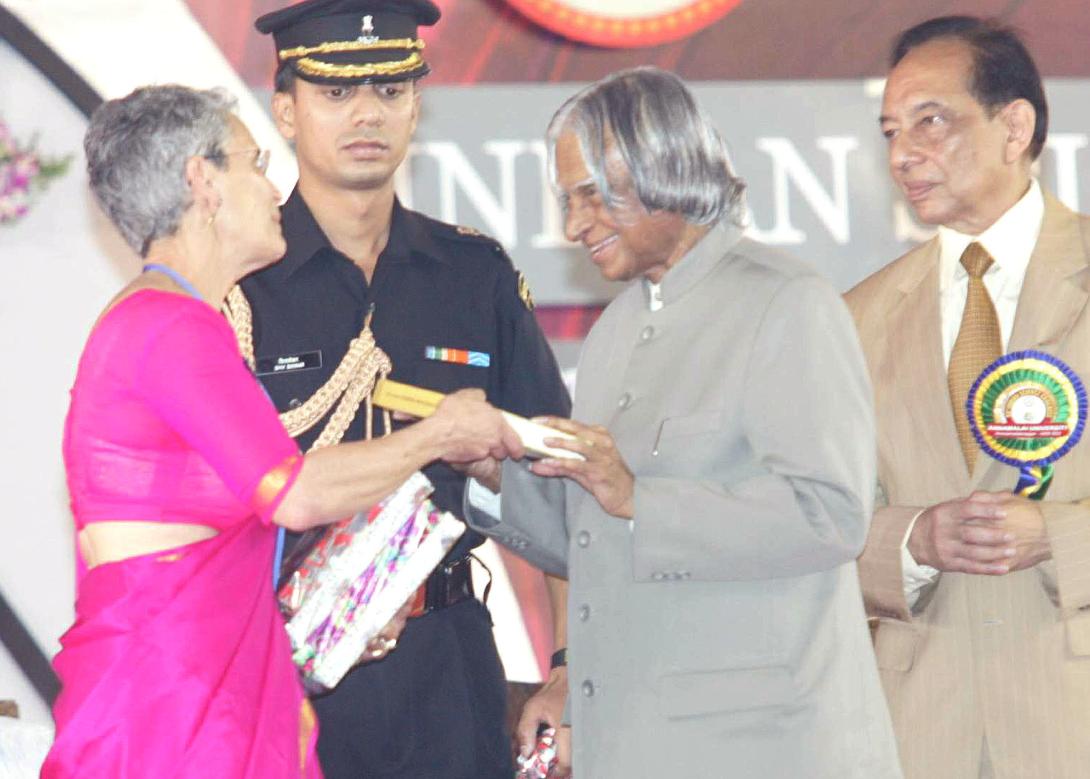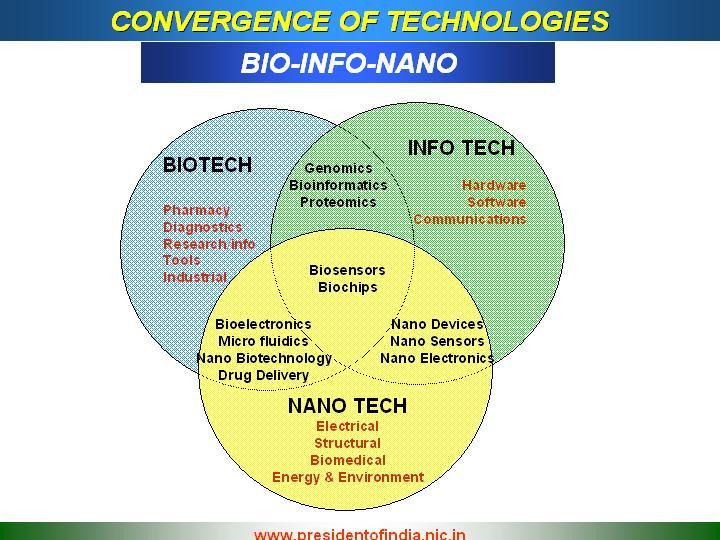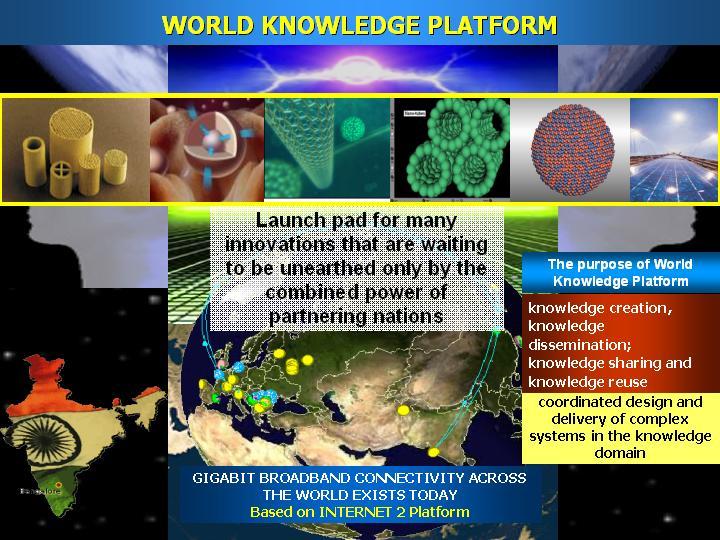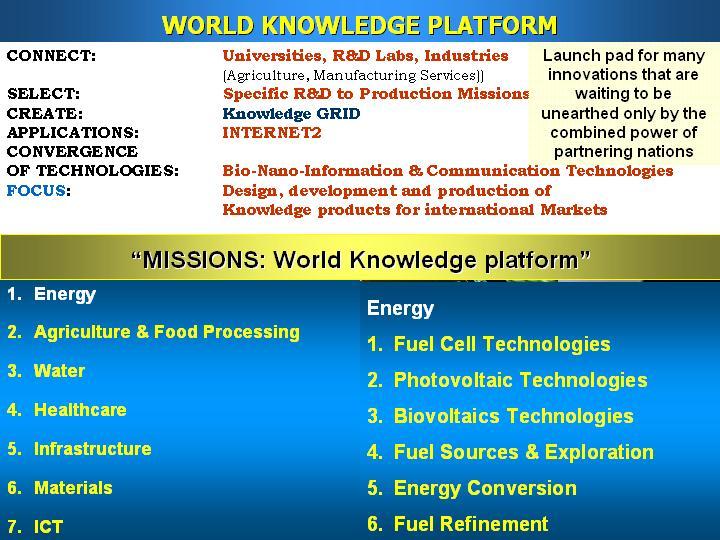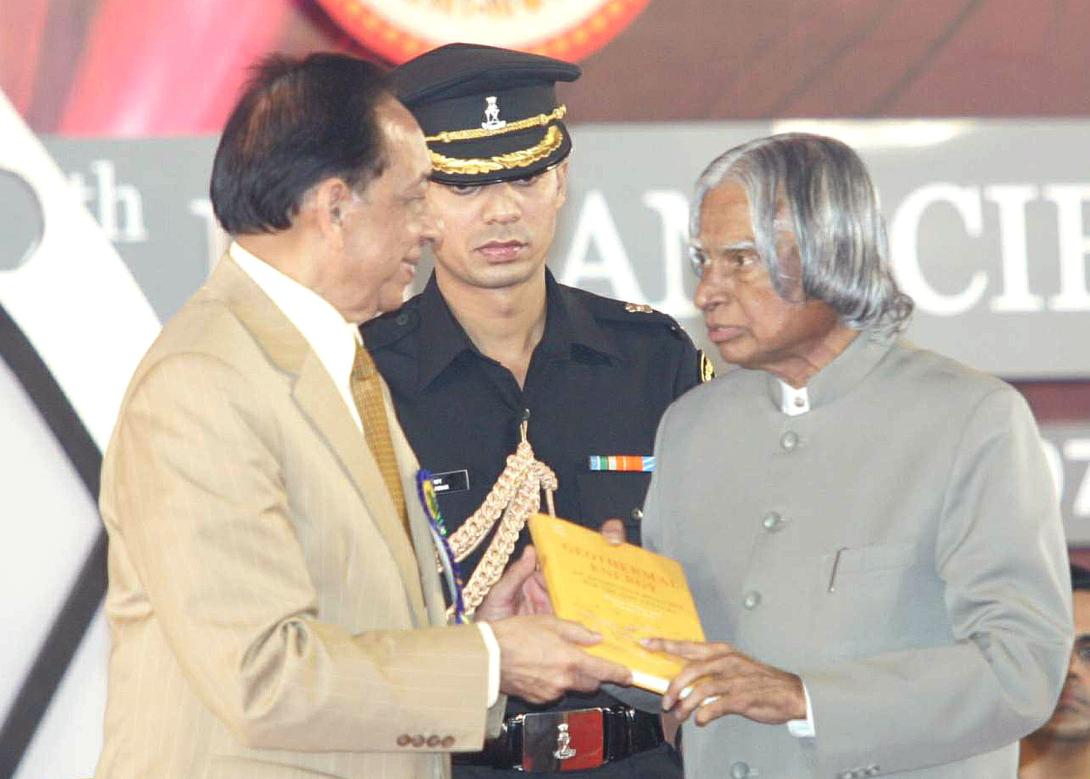Address at the 94th Indian Science Congress, Chidambaram, Tamil Nadu
Chidambaram, Tamil Nadu : 05-01-2007
Energy Independence and Planet Earth
"The Earth is the cradle of mankind,
but one cannot eternally live in a cradle!"
Dear Friends, I am very happy that the 94th Indian Science Congress has focused on the theme ?Planet Earth?. My greetings to all the scientists who have come here from various parts of the country and abroad. It will be a beautiful opportunity for sharing of thoughts among experienced scientists and young scientists, which will enable us to evolve a roadmap for better understanding, preserving and nurturing of the Planet Earth for the future.
Science in India - What it means to you?
While I was preparing for this lecture, a thought occurred to me, ?since I was to address the young and experienced scientists, I should seek the views of both youth and experienced.? I posted a question in my website on 31 Dec 2006. The question was: ?Science in India ? what it means to you?? Within 3 days time, I received more than 120 responses, particularly from the youth and also emails from experienced scientists. We have brought out a booklet containing all the responses.
It is being made available to the Science Congress. When I analyzed the responses, I realized how the past meets the present and creates the future. The responses reflect the dreams of the youth on science and also the change of mind among the experienced scientists. Science for youth means an inspiration and also a way of life and their restless minds are urging for fast action in science education, science research and science results. The experienced unanimously have confirmed that Science in India has to graduate for dealing with and finding solution to the problems of our country, particularly the rural areas. When we look at both together, the views of young and experienced, it definitely gives an inspiring message to the nation that India has to give the highest priority for science in providing resources, evolving good science teachers and evolving world class research institutions in the country. The scientific magnanimity (Refer my website) radiating from experienced scientists throughout the country will inspire the youth to take up science as a life time mission.
Energy Independence born out of two purposes
Based on the theme ?Planet Earth?, for this Science Congress, I am discussing two aspects in my presentation. How do we make our earth livable and free from CO2 bombardment and thereby reduce the damage to the ozone layer? Also how do we find an economic solution to energy production, which has several scientific challenges encompassing many scientific fields? Hence the subject I have selected is Energy Independence.
The world energy forum has focused on what is going to be the status of fossil fuel based material like oil, gas and coal in the next fifty to hundred years. It is estimated by international forecasting that the available resource of fossil material will get exhausted within the next fifty to hundred years since these resources are non-renewable. And also friends, I would also like to share with you about the recent article in the ?New Scientist? which mentions about dumping of 30 billion tonnes of carbon-di-oxide into the atmosphere by all the nations every year. This dumping primarily arises due to the use of fossil fuels which directly affects the ozone layer which is existing between 25 kms to 30 kms above the earth?s surface. As you all know, Ozone layer regulates the sun radiation and cosmic radiation on earth. Earth is experiencing both stratospheric cooling (due to ozone hole) and tropospheric warming (due to increased green house gases). The question is, how do we protect our earth by protecting the atmosphere.
I would like to focus on how India can contribute in minimizing CO2 contamination in the atmosphere to save the Planet Earth. Let me now discuss the energy requirement and its structures in the coming two and a half decades which is applicable for one billion plus people of India and it will be relevant to the other five billion people of planet Earth.
Structure of Energy Sources for India
Based on the progress visualized for the nation during the next two decades, the power generating capacity has to increase to 400,000 MW by 2030 from the existing hundred and thirty thousand Megawatts in India. This takes into consideration of energy economies planned and the design and production of energy efficient equipments and systems. Energy independence has got to be achieved through three different sources namely Hydel capacity, nuclear power and non-conventional energy sources primarily through solar and wind energy, apart from the use of thermal power through clean coal technology.
In this context, I would like to mention about India?s partnership in the US FutureGen project which is an initiative to create the first zero emission fossil fuel plant. When operational, the prototype will be the cleanest fossil fuel fired power plant in the world. Indian companies are expected to participate in
private sector segment of the projects. It will draw upon the best scientific talent to pursue an innovative project focused on the design, construction and operation of a technically cutting edge power plant. Early completion of this project will enable application of this technology to the future power projects based on coal and minimize the carbondioxide dumping in atmosphere since we have to establish new coal based power plants with the capacity of over 56,000 MW before 2030 in India. Also, this technology will be useful in modernizing the existing coal based power plants generating power to the extent of 80,000 MW.
In 2030, the Hydel capacity is expected to contribute 80,000 MW. Large scale solar energy farms of hundreds of megawatts capacity in certain number could contribute around 55,000 MW and wind energy can contribute 64,000 MW. The nuclear power plants should have a target of 50,000 MW of power. The balance 15,000 MW will be generated through use of solid bio mass and municipal waste. Now, let me discuss the scientific research and development challenges for realizing the mission of energy independence. First, I would like to talk about solar energy.
CNT based solar cells for higher efficiency
One of the important need for achieving energy independence by 2030 is to increase the power generated through renewable energy sources from the existing 5% to 25%. Particularly, the energy produced through solar energy has to increase substantially. The low efficiency of conventional photo voltaic cells has restricted the use of solar cells for large application for power generation. Research has shown that the Gallium Arsenide (GaAs) based PV cell with multi junction device could give maximum efficiency of only 30%. Hence it is essential to launch a research mission on Carbon Nano Tube (CNT) based PV cell which has got higher level of promise in efficiency.
The CNTs provide better electron ballistic transport property along its axis with high current density capacity on the surface of the solar cell without much loss. Higher electrical conductivity and mechanical strength of CNT could improve the quantum efficiency to the order of 35%. But, this is not sufficient. Recent research has shown that the alignment of the CNT with the polymer composites substrate is the key issue and this aligned CNT based PV cells would give very high efficiency in photovoltaic conversion. The polymer composites increase contact area for better charge transfer and energy conversion. In this process, the researchers could achieve the efficiency of about 50% at the laboratory scale. Our scientists have to take up this challenge and come up with the development of a CNT based PV cell with an efficiency of at least 50% within the next three years so that it can go into the commercial production within five years. In addition, they can also take up the development of organic solar cells, dye-sensitized solar cells and third generation solar cells. There are lots of opportunities for research in fundamental science in this area and I would like to see these opportunities used by a wider spectrum of our Universities and Research Laboratories in a coherent, consorted way with a mission mode programme. Now, I would discuss about bio-fuel research.
Increasing the Bio-fuel oil content
The country is presently importing around 100 million tonnes of crude oil with a foreign exchange outflow of Rs. 1,50,000 Cr. per annum (nearly US $ 34 billion). By 2030 with the present growth rate we may have to import 300 million tonnes. To reduce the import content, apart from locating the embedded oil resources in the country, we have to work on producing Ethanol and bio-diesel in a cost effective manner which can be blended to the extent of 30% to 40% with petrol and diesel. Simultaneously, we have to work on development of other energy sources like hydrogen which is totally pollution free.
Our study indicates that we have to realize production of 60 million tonnes of bio-diesel and 60 million tonnes of Ethanol per annum by 2030. Particularly for bio-diesel we have to get this production from 20 million hectares which is one third of the quantum of present waste land available in the country, where Jatropha can be planted. We have to achieve it through research for improving the productivity of Jatropha plant seeds, mastering the extraction and esterification technology and finding remunerative bi- products, which is a challenge for life science scientists. Our aim should be to evolve a drought resistant Jatropha seed which will provide minimum 3 kgs of seed per plant annually commencing from third year of plantation and minimum 40% oil content. Similar effort is required in ethanol plantation and production also. I consider, this is definitely an important challenge for the agriculture scientists, gene experts, plant breeders, biotechnologists and others participants of this science congress. Our agriculture experts must also collaborate with our combustion experts and produce the most fuel efficient engines that can run with 100% bio-diesel or ethanol produced from Jatropha plantation or sugarcane. Let us discuss nuclear fuel research.
Efficient thorium based nuclear fuel
As you are aware, India has abundant quantity of thorium. But thorium is a non-fissile material. It has to be converted into a fissile material using the Fast Breeder Reactor. We have to study the thorium based programme in relation to the on going programmes of the Department of Atomic Energy (DAE). Going critical of fast breeder reactor which is in an advanced stage of construction, development of Advanced Heavy Water Reactor (AHWR) and Accelerator Driven System (ADS) technologies have to be pursued in an integrated way. There are many scientific and technological challenges.
Fast breeder Reactors: Fast breeder reactors can make a significant contribution to India?s energy requirements, but the rate of increase in fast reactor installed capacity has to follow a certain growth path as plutonium-239, the fuel for the fast reactors gets generated in nuclear reactors. Thus the rate of new fast reactor capacity addition has to be determined by the rate at which plutonium can be bred. The breeding depends on the fast reactor design and the chemical form of plutonium fuel. Metallic fuel gives much higher breeding ratio whereas plutonium in oxide form gives a lower breeding ratio. So our basic research has to be on the development of metallic fuel on priority. It is only after we have established enough fast reactor capacity, we can shift to thorium based systems and continue to get power from thorium reactors.
Thorium Technologies: Country has already set up a facility for reprocessing thorium and has designed an Advanced Heavy Water Reactor (AHWR), which aims to derive two-third of its power from thorium and one third from plutonium generated from Fast Breeder Reactor (FBR). Implementation of the AHWR project and development of associated fuel cycle facilities will provide industrial scale experience in the handling of thorium. An important basic research area would be to develop reactor systems based on thorium wherein power derived from thorium can be increased and external input of fissile material can be minimized. It will definitely lead to early utilization of thorium in power production.
Accelerator Driven Systems: The other possibility for thorium utilization is through Accelerator Driven Systems (ADS). ADS have two main components: an accelerator and a reactor. A reactor system using only thorium as fuel cannot become critical as thorium is not a fissile material. To make it critical, an external supply of neutrons is needed. A ?spallation? source can provide an external source of neutrons to achieve criticality in an otherwise sub-critical system. Protons, when accelerated to high energy in an accelerator and made to collide with a target of high atomic number element (such as lead, tungsten, uranium etc.), cause detachment of a large number of neutrons from these nuclides in a process called spallation. The development of an appropriate proton accelerator is the first step towards the development of ADS. The research results will lead to building an accelerator and subsequently the use of accelerator for detachment of neutrons from heavy elements. Accelerator technology has many other applications. For example, accelerators are useful in health care for treatment of cancer and in basic research as tools to study structure of atom. Accelerators are also useful in the industry for chemical processing, where irradiation by accelerators can be used to improve the mechanical and electrical properties of cable insulation. Our nuclear scientists and technologists have to meet the challenges. The next area we will consider is about efficient hydrogen fuel.
Efficient Hydrogen Fuel
During my visit to Iceland, I had a unique experience, which I would like to share with you. Friends, the President of Iceland and myself with our teams were traveling in a hydrogen fuelled bus. The bus also took us to a Hydrogen Fuel station and we filled up Hydrogen gas in the fuel tank and we continued our journey and discussions. I am aware that, hydrogen operated motorcycles, three wheelers and small generators have been developed in the country. In addition, Polymer Electrolyte Membrane Fuel Cell (PEMFC) and Phosphoric Acid Fuel Cell (PAFC) technologies and fuel cell ? battery hybrid van have been developed. Hydrogen production from distillery waste and other renewable methods have also been developed. Hydrogen storage in metal hydrides has also been demonstrated. We have also to work on liquid hydrogen production plants. At present, research is in progress to further improve the performance and technology of these vehicles and generators. Particularly the Fuel cell powered automobiles will become a reality in the world. In India, an electric car company in collaboration with DRDO has developed a hybrid vehicle which can be run with a fuel cell and the cost per kilometer will be just 40 paise in addition to the pollution free operation of the Car. Also, we should know that ISRO launch vehicles use liquid oxygen and hydrogen fuel. Production of liquid hydrogen is being done in Mahendragiri Space Centre. I would urge the research community to concentrate on the areas such as high pressure storage of hydrogen, liquid storage, storage in nano-structure, development of safety codes and standards and development of dedicated engine for hydrogen fuel. Finally, I would like to mention about wind energy research.
Wind Energy Research
It is essential that in an area of wind energy research, we need to earmark sufficient efforts and resources for research for potential windy areas, optimal plant design, cost effectiveness and progressive improvements. For realizing, generating capacity of 64,000 MW of electrical power from wind energy, we have to take the following actions:
A. The present potential of wind energy in India has been worked out to be 45,000 MW. Studies must be launched to explore other potential sources such as off-shore wind farms, especially, since India has over 7000 km long coastlines. It may also be necessary to apply advanced techniques in wind velocity measurement and relating it to available electrical out put.
B. Work towards standardization of the wind turbine power plants to realise the cost reduction due to economies in the scale. Also research and development is required for reducing the investment per MW through improved designs and application of newer technologies.
C. I understand that the generation cost at presently is between Rs.2.5 to Rs.3.5 per unit depending upon the site. Research is required to bring down this cost to Rs.1.00 to Rs.2.00 per unit based on improved designs and maintenance free systems.
D. Feasibility studies may be conducted by wind energy researchers to determine economic sizes of wind energy plants which can be used for lifting water from 30 meter level and serve the needs of farmer having small holdings in a region with an average wind speed of 8 to 10 km per hour.
Now, I would like to talk about the research required for reducing the impact of coal based power plants on atmosphere.
Minimizing the impact of coal based plants on environment
To minimize the impact of coal based plants on environment in the country we have to use super critical technologies with higher steam parameters for improved plant efficiency and circulating fluidized bed combustion for use of inferior coal. The newer technology option such as integrated coal gasification combined cycle and solar integrated combined cycle should be completed fast and implemented in our power plant. There is a need to implement these technologies at the earliest so that we can get better coal, higher efficiency of the plant, reduced transportation load and minimum impact on the environment. Now, I would like to present few thoughts on convergence of technology and world knowledge platform which will provide a cost effective and pollution free solution for realizing energy independence for partner countries using their core competence.
Convergence of Technologies
The information technology and communication technology have already converged leading to Information and Communication Technology (ICT). Information Technology combined with bio-technology has led to bio-informatics. Now, Nano-technology is knocking at our doors. It is the field of the future that will replace microelectronics and many fields with tremendous application potential in the areas of medicine, electronics and material science. When Nano technology and ICT meet, integrated silicon electronics, photonics are born and it can be said that material convergence will happen. With material convergence and biotechnology linked, a new science called Intelligent Bioscience will be born which would lead to a disease free, happy and more intelligent human habitat with longevity and high human capabilities. Convergence of bio-nano-info technologies can lead to the development of nano robots.
World Knowledge Platform
During my visit to Singapore, Philippines and Republic of Korea, I have put forward the concept of ?World Knowledge Platform?, which will integrate the core competencies of the partner countries to develop knowledge products. This platform will enable joint design, development, cost effective production and marketing of the knowledge products in various domains based on the core competence of partner nations to international market.
In India, today we have an example of successful joint venture which harnessed the core competencies of two nations India and Russia, who have different cultures, languages and design standards. The product, which has come out, is of world class, much ahead of other countries due to the joint working of best of minds from both countries. This is an example of how the core competencies of nations can be combined and the best of knowledge products can emanate well ahead of time.
Missions of World Knowledge Platform: The convergence of Bio, Nano and ICT is expected to touch every area of concern to the humanity particularly in the area of energy. The ?World Knowledge Platform? will take up the missions, in some of the areas given below, which are of utmost urgency to all of us to make our world a safe, sustainable, peaceful and prosperous place to live:
Topics & Application Areas
The topics and application areas for the World Knowledge Platform may be : Energy, Agriculture and Food Processing, Water, Healthcare, Infrastructure, Materials and ICT. Particularly in Energy, the following missions may be undertaken :
1. Fuel Cell Technologies
2. Photovoltaic Technologies
3. Biovoltaics Technologies
4. Fuel Sources & Exploration
5. Energy Conversion
6. Fuel Refinement
The task must be specially focused leading to the design, development leading to production for meeting the energy demands of partner countries and the world market. The core competence of different countries must be utilized for research, development and rapid commercialization of the products. The world knowledge platform will also evolve a virtual design centre with the participation of collaborating countries. World knowledge Platform will be the launch pad for many innovations that are waiting to be unearthed only by the combined power of partnering nations in the energy sector.
I am sure members of 94th Indian Science Congress can take the initiative of creating the world knowledge platform by integrating the academic institutions, R&D institutions and the business enterprises where they are working today spread in different parts of the world.
Action plan for long term scientific research
Every year, when I come to Science Congress, there has been an assurance that the S&T budget will be increased. This year the Hon?ble Prime Minister has announced that the allocation on Science & Technology will be progressively increased from less than 1% of GDP to 2% of GDP in next five years? period. I urge that there is a need for focused action plan to realize this. For enabling time bound action I would suggest constitution of a joint team consisting of members from all scientific departments of Govt of India and other concerned departments and agencies. This team should work out the growth plan for research, science education programme, training programmes and laboratory establish programme in a integrated way for the five year period, keeping a 20 years science vision perspective. The yearly increase could be 2007-2008 1.2%, 2008-09 1.4% and 2009-10 1.6%, 2010-2011 1.8% and 2011-2012 2%. I would recommend in the total allocation 0.5% of GDP could be allocated for basic research. A document should come out spelling out integrated national S&T programme, including basic research, applied research and Technology demonstration. The document should also indicate the participating departments, research institutions, academic institutions and universities along with specific milestones to be achieved in a definite time frame.
This commitment from the Prime Minister is very good news for scientific community. But when I studied the utilization of profile of budget allotment for the Scientific Ministries yesterday night, there has been approximately more than 20% of the funds has remained unutilized during the 2005-2006. Hence there is a need for the scientific community to have a clear vision of National Science and Technology. Keeping that vision in mind, we have to build adequate capacity in the system in terms of mission mode projects in Basic Research and applied research, development of high quality scientific manpower, creation of state of the art infrastructure, planning collaborative ventures with friendly countries and above all evolving a robust policy and management system. For example, I have discussed about the energy independence vision today, similarly all scientific departments have to have a clear vision with a clear road map from basic research to commercialization. This will ensure productive utilization of the allocated funds for meeting these national development goals.
Conclusion
Atmosphere is the life-supporting heritage for living systems of planet Earth. Preserving and nurturing atmosphere is the responsibility of all the citizens of the world. Scientists have to play a major role in providing a path to see that the right technology is used for improving the quality of life of the world citizens today so that it does not have an adverse long term impact. Before concluding, I would like to share with you the thought expressed by one of my friends who is a Professor in Carnegie Mellon University on the topic ?science in India?. He says our young and experienced scientists are very eager to find solutions to the scientific problems posing the western university. When this solution is found, it will generally be relevant to western society on both side of Atlantic. It is essential for India to start working on problems, which are being faced by the billion people in the country, 70% of whom are living in rural areas. If we find useful scientific results in the Indian context it will be useful to the other four billion people in the world who are placed in similar situation. I would suggest to the members of scientific community assembled here to search for typical Indian problems needing urgent solution which can improve the quality of life of people in the country and find scientific solutions to the problems faced by humanity in a time bound manner. You will be ever remembered for this unique contribution to the nation and thereby to the planet Earth.
My best wishes to all the participants of 94th Indian Science Congress success in your mission of promoting science for societal transformation.
May God bless you.

